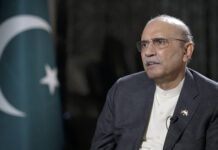That Islamic banking has grown exponentially in Pakistan is a well established fact, covered extensively by this magazine alone. The number of Islamic banks in Pakistan have grown in the last two decades from just two at the start of the 2000s, to now, twenty-two. Similarly, Islamic banking constituted just 0.8% of all banking deposits in 2003, but accounted for 18% of total deposits in 2019.
One can see this growth reflected in deposit numbers as well. Between 2003 and 2018, deposits in the conventional Pakistani banking system grew at an average rate of 20.2% per year, according to data from the State Bank of Pakistan (SBP), from Rs1.8 trillion to Rs13.4 trillion. That looks impressive, until one looks at the growth rate of the Islamic banking sector: during that same period, deposits at Islamic banks and Islamic banking windows of conventional banks grew at an average of 65.1% per year, or from Rs14.4 billion to Rs2.2 trillion.
And in a new Moody’s sector in-depth piece published on February 24, analyst Tengfu Li and associate analyst Chong Jun explain that this is set to grow. The report is titled “Islamic banks – South and Southeast Asia: Sector is well positioned for continued growth as economies recover”, but has some broad insights that cover Pakistan as well.
Li explains that that slamic banks in Bangladesh, Brunei, Indonesia, Malaysia and Pakistan have ample capital and liquidity buffers to meet increased demand for financing in 2021 as economies bounce back from the coronavirus pandemic. Prospects for longer-term growth are also bright for the sector, thanks to young, growing populations and government efforts to develop Shariah-based financing.
“Although Islamic banks’ profitability in these regions weakened in 2020, their capital buffers remain mostly robust, supported by government measures to soften the impact of the coronavirus outbreak. Strong capitalization will in turn enable Islamic banks to meet increased demand for financing as economies recover,” says Li.
Liquidity has also eased or remained stable because of strong growth in low-cost deposits as consumers and businesses cut spending, and as central banks relaxed reserve requirements and carried out open market operations.
Moody’s expects Islamic financing will continue to expand faster than conventional loans across South and Southeast Asia, increasing the share of Islamic financing in total financing. Prime-age populations, or people aged 25-54 years, will boost the long-term expansion of Islamic banking, especially given these countries’ large untapped market.
Key to the growth of Islamic banking are efforts by governments of major Islamic banking markets in South and Southeast Asia to develop the sector, given its role in increasing financial inclusion and inherent alignment with environmental, social and governance principles, which are growing in relevance amid the pandemic. Additionally, Islamic banking is part of a halal ecosystem governments want to create to spur economic development.
More specifically, when it comes to Pakistan, most banks in the country have robust capital buffers, well above regulatory minimums. Among the countries examined, Pakistani Islmaic banks had the second higher capital adequacy ratio, after Indonesia, and ahead of Bangladesh and Malaysia.
As Li explains, government aid has been instrumental in protecting banks from the worst of the pandemic: “A key part of such aid has been regulatory forbearance that allows banks to temporarily restructure repayment terms for stressed accounts without having to classify them as default or set aside additional provisions. This has given banks time to build buffers against potential losses while helping affected customers cope with disruptions to their income.”
Due to measures of the government, Pakistan also saw its non performing loans decrease (the other country that witnessed such a change was Malaysia).
Pakistan will also benefit from its young, growing populations, who have a cultural affinity with halal products and services, which will fundamentally underpin demand for Islamic financial services. Pakistan has the highest percentage growth, at 18%, of the countries examined, when it comes to prime-age populations, or people aged 25-54 years. On the other hand, it also has the lowest financial inclusion of the countries included, with just 20% of adults above the age of 15 having a bank account (compare that to nearly 50% in Bangladesh, and 85% in Malaysia).
Still, the report is optimistic: corresponding increases in smartphone ownership will also aid the expansion of Islamic banking, especially with the progressive rollout of electronic know-your-customer services that will facilitate remote verification of identification. And the lack of financial inclusion means that there is a huge untapped market for Islamic banks in countries like Pakistan.
Finally, the government remains the backbone spurring growth in Islamic banking in the region. This is true as well in Pakistan, where in July 2020, the central bank started allowing Islamic banking windows, which are dedicated counters in branches of conventional banks, to offer financing on condition the branches become fully Shariah-compliant within three years. As part of the country’s financial inclusion strategy, the Pakistani government aims to increase the share of Islamic banking to 25%.

























